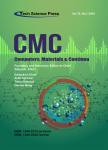Decision Making in Internet of Vehicles Using Pervasive Trusted Computing Scheme
作者机构:Department of Computer Science and EngineeringJaypee University of Information TechnologyWaknaghatSolan173234Himachal PradeshIndia Department of Computer Information SystemsUniversity of Fraser ValleyCanada Department of Computer Science and ITAbu Dhabi UniversityUnited Arab EmiratesUAE
出 版 物:《Computers, Materials & Continua》 (计算机、材料和连续体(英文))
年 卷 期:2021年第68卷第8期
页 面:2755-2769页
核心收录:
学科分类:0809[工学-电子科学与技术(可授工学、理学学位)] 08[工学] 0812[工学-计算机科学与技术(可授工学、理学学位)]
基 金:funded by the Abu Dhabi University Faculty Research Incentive Grant(19300483–Adel Khelifi) United Arab Emirates.Link to Sponsor website:https://www.adu.ac.ae/research/research-at-adu/overview
主 题:Pervasive computing vehicular networks security trust decision schemes trusted internet of vehicles big data
摘 要:Pervasive schemes are the significant techniques that allow intelligent communication among the devices without any human *** Internet of Vehicles(IoVs)has been introduced as one of the applications of pervasive computing that addresses the road safety *** participating within the IoV are embedded with a wide range of sensors which operate in a real time environment to improve the road safety *** mechanisms have been proposed which allow automatic actions based on uncertainty of sensory and managed *** to the lack of existing transportation integration schemes,IoV has not been completely explored by business *** order to tackle this problem,we have proposed a novel trusted mechanism in IoV during communication,sensing,and record *** proposed method uses trust based analysis and subjective logic functions with the aim of creating a trust environment for vehicles to *** addition,the subjective logic function is integrated with multi-attribute SAW scheme to improve the decision metrics of authenticating *** trust analysis depends on a variety of metrics to ensure an accurate identification of legitimate vehicles embedded with IoT devices *** proposed scheme is determined and verified rigorously through various IoT devices and decision making metrics against a baseline *** simulation results show that the proposed scheme leads to 88%improvement in terms of better identification of legitimate nodes,road accidents and message alteration records during data transmission among vehicles as compared to the baseline approach.



